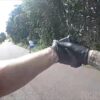Kyoto, a popular travel destination in Japan, will now restrict tourist access to parts of its renowned geisha district.Officials have reported an increase in complaints regarding tourist misbehavior and street overcrowding.Overseas tourist traffic to Japan is rebounding to pre-pandemic levels.Japan’s ancient capital of Kyoto, long a popular destination for tourists, is closing off some private-property alleys in its famous geisha district because of complaints about misbehaving visitors.Tourists crowd the narrow, quaint streets of the area called Gion, often following tour guides who show people around and lecture for long hours, local district official Isokazu Ota said Friday.”We are going to put up signs in April that tell tourists to stay out of our private streets,” he told The Associated Press.JAPAN SENTENCES MAN TO DEATH FOR KYOTO ANIMATION STUDIO FIRE THAT KILLED 36 PEOPLE, INJURED DOZENSA sign will say in both Japanese and English: “This is a private road, so you are not allowed to drive through it,” although the keep-out warning is aimed mainly at pedestrians, not cars, as the Japanese wording refers to generically “passing through.” Visitors are seen at Kiyomizu temple, a wooden structure set in the hills around Kyoto. Kyoto, long a popular destination for tourists, is closing off some private-property alleys in its famous geisha district because of complaints about misbehaving visitors. (PHILIP FONG/AFP via Getty Images)”There will be a fine of 10,000 yen,” the sign adds, which comes to about $70 under recent currency conversion rates.The ban covers just several blocks of Gion. The district’s public streets will remain open to tourists, so the area and the rest of Kyoto will still be teeming with visitors, both from Japan and around the world.Gion’s outrage highlights brewing resentment at what many people feel is “over-tourism,” even though the Japanese economy depends more than ever on tourism revenue to sustain growth.The district of winding alleyways is known for picturesque teahouses, where geisha and their maiko apprentices, wearing fancy kimono and hair ornaments, perform in dance and music.US AND JAPAN CALL FOR BAN OF NUCLEAR WEAPONS IN OUTER SPACEIn a city known for gorgeous temples and gardens, Gion is one of its most scenic and historical spots. Tourists, armed with cameras, like to wander around Gion, hoping to catch the women on their way to dance class or a fancy dinner party.Complaints about over-zealous tourists began bubbling years ago, though the discontent cooled when the coronavirus pandemic brought a lull in tourism. Now, visitors are back with a frenzy.Overseas tourist traffic to Japan is rebounding to pre-pandemic levels.More than 22 million visitors came to Japan last year, eager to take in sushi, electronic gadgetry and the splendors of nature like Mount Fuji and the beaches of Okinawa. In 2019, incoming travel totaled more than 31 million people, and this year’s number could approach or even overtake that, experts say.It’s been too much for many residents of Gion. Their local council summarized the less than eager sentiments a few months ago by proclaiming: “Kyoto is not a theme park.”
Breaking News
2024-10-27 A man who abused up to 3,500 girls online has been sentenced for crimes including manslaughter
2024-10-27 Rear Admiral Claims Government COVERED UP Alien Contact. We’ve Talked with ALIENS????
2024-10-27 BREAKING: UN Sec Council Passes Gaza Aid, US Sits Out; Trump Audio EXPOSES Pressure On MI Officials
2024-10-27 Missing Juvenile Aamina Turner from the 12th District – Blotter
2024-10-27 Missing Endangered Person Ivelisse Lugo from the 2nd District – Blotter
Static News
500k views later The FLORIDA...
phillynews215 2021-04-27 50 Comments on Body Cam: Officer Fatal Shooting Man with a Sword – Pomona Police March 30- 2020
#officerinvolvedshooting #policeshooting #Pomona Policedepartment Please...
phillynews215 2021-04-27 50 Comments on Bodycam Shows Deputies Shooting Armed Suspect in Greenville, South Carolina
** (Disclaimer: This video content...
Video brought to you by...
Rafael Nieves 2024-10-27 0 Comment on A man who abused up to 3,500 girls online has been sentenced for crimes including manslaughter
A "relentless and cruel" online...
Rafael Nieves 2024-10-27 38 Comments on Rear Admiral Claims Government COVERED UP Alien Contact. We’ve Talked with ALIENS????
Robby Soave and Briahna Joy...
Rafael Nieves 2024-10-27 0 Comment on BREAKING: UN Sec Council Passes Gaza Aid, US Sits Out; Trump Audio EXPOSES Pressure On MI Officials
The Hill’s Kevin Cirilli recaps...
Rafael Nieves 2024-10-27 0 Comment on Missing Juvenile Aamina Turner from the 12th District – Blotter
The Philadelphia Police Department is...
Rafael Nieves 2024-10-27 0 Comment on Missing Endangered Person Ivelisse Lugo from the 2nd District – Blotter
The Philadelphia Police Department is...
phillynews215 2024-02-02 Comments Off on Hesitant Republicans could derail Mayorkas impeachment effort
House GOP leaders are closely...
phillynews215 2024-02-01 Comments Off on Brazilian suffers agonizing death eating one of world’s most toxic fishes
A Brazilian man who feasted...
*Sponsored Video* If you are...
It’s been years now since...
This is officer Bryce Verna...
Proudly powered by ANGELHOUSE 2009 - 2024 | ALL YOUTUBE VIDEOS IS A REGISTERED TRADEMARK OF GOOGLE INC. | THE YOUTUBE CHANNELS AND BLOG FEEDS IS MANAGED BY THE RIGHTFUL OWNERS/CREATORS HOSTING BY PHILLYFINESTSERVERSTATS INC. ALL RIGHTS RESERVED



















